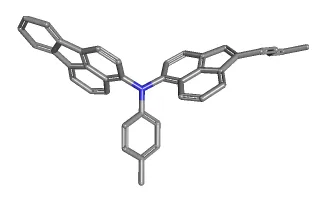
Identity of Anthracene oil
Name Anthracene oil
IUPAC name Anthracene oil, 9H-carbazole; anthracene; phenanthrene
CAS number 90640-80-5
EC number 292-602-7
Chemical formula C40H29N
Hazard classification of Anthracene oil
VERY HAZARDOUS TO HEALTH ● H350: May cause cancer
● H340: May cause genetic defects
● H360: May damage fertility or the unborn child
● H371: May cause damage to organs
● H304: May be fatal if swallowed and enters airways
● H334: May cause allergy or asthma symptoms or breathing difficulties if inhaled
HAZARDOUS TO THE OZONE LAYER
● EUH 059: Hazardous to the ozone layer
Anthracene oil in annex XIV of REACH
Key regulatory information
Intrinsic property for which it was included in Annex XIV of REACH: Carcinogenic, skin sensitizer
Sunset date: 4 October 2020
Latest date to submit the authorisation dossier to ECHA: 4 April 2019
Who is concerned by REACH authorisation? Main industries concerned Construction, chemical, paint
EcoMundo’s advice to succeed in your authorisation application
Recommendations for your authorisation dossier
- As the substance does not have a threshold, the Socio-Economic Analysis route will be chosen. This analysis will demonstrate that the benefits related to the granting of the authorisation outweigh the risks associated.
- The applicant will thus have to conduct a socio-economic analysis as well as the CSR and Analysis of Alternatives.
- The exposure and associated impacts assessment is particularly complex for this substance due to its PBT and vPvB properties
- To assess the impacts for health and the environment, EcoMundo recommends to double the approaches through modelling and data monitoring
- The creation of a dossier is usually between 6 and 18 months depending on the complexity of the dossier (intrinsic properties of the substance, complexity of the applicants’ value and production chain.
- Key elements of a successful authorisation dossier:
- A specific request with the most elements possible in relation to your activity
- Transparence and realism of the hypotheses and data as all elements produced will be challenged by the committees or stakeholders
- Underlining the exposure for man and the environment with associated emission measures
- The choice of the monetary assessment methodology is key for this dossier
Planning recommendations
- The Latest Application date for this substance is 04/04/2019, the last submission window is on February 2019.
- It is therefore recommended to start the creation of the dossier immediately (september 2017).
Identity of Anthracene oil
Name Anthracene oil
IUPAC name Anthracene oil, 9H-carbazole; anthracene; phenanthrene
CAS number 90640-80-5
EC number 292-602-7
Chemical formula C40H29N
Hazard classification of Anthracene oil
VERY HAZARDOUS TO HEALTH ● H350: May cause cancer
● H340: May cause genetic defects
● H360: May damage fertility or the unborn child
● H371: May cause damage to organs
● H304: May be fatal if swallowed and enters airways
● H334: May cause allergy or asthma symptoms or breathing difficulties if inhaled
HAZARDOUS TO THE OZONE LAYER
● EUH 059: Hazardous to the ozone layer
Anthracene oil in annex XIV of REACH
Key regulatory information
Intrinsic property for which it was included in Annex XIV of REACH: Carcinogenic, skin sensitizer
Sunset date: 4 October 2020
Latest date to submit the authorisation dossier to ECHA: 4 April 2019
Who is concerned by REACH authorisation? Main industries concerned Construction, chemical, paint
EcoMundo’s advice to succeed in your authorisation application
Recommendations for your authorisation dossier
- As the substance does not have a threshold, the Socio-Economic Analysis route will be chosen. This analysis will demonstrate that the benefits related to the granting of the authorisation outweigh the risks associated.
- The applicant will thus have to conduct a socio-economic analysis as well as the CSR and Analysis of Alternatives.
- The exposure and associated impacts assessment is particularly complex for this substance due to its PBT and vPvB properties
- To assess the impacts for health and the environment, EcoMundo recommends to double the approaches through modelling and data monitoring
- The creation of a dossier is usually between 6 and 18 months depending on the complexity of the dossier (intrinsic properties of the substance, complexity of the applicants’ value and production chain.
- Key elements of a successful authorisation dossier:
- A specific request with the most elements possible in relation to your activity
- Transparence and realism of the hypotheses and data as all elements produced will be challenged by the committees or stakeholders
- Underlining the exposure for man and the environment with associated emission measures
- The choice of the monetary assessment methodology is key for this dossier
Planning recommendations
- The Latest Application date for this substance is 04/04/2019, the last submission window is on February 2019.
- It is therefore recommended to start the creation of the dossier immediately (september 2017).







